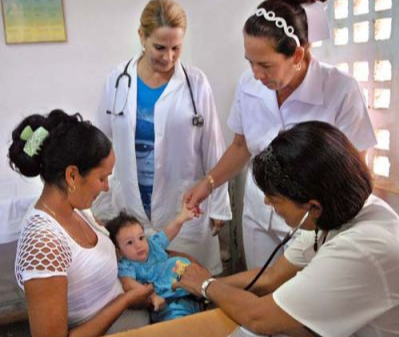
By Roberto Morejón
Although the Cuban Public Health System does not escape the material tensions derived from several factors, first of all the intensified U.S. blockade, the reduction of the infant mortality rate stands out in last year's balance.
In the largest of the Antilles, a rate of 7.1 per 1,000 live births was reported in 2023, compared to 7.5 in 2022, hence the progress that represents 74 fewer deaths.
The province of Pinar del Río stood out, with 3.1 per 1,000 live births, leading the country despite its difficult context.
In fact, residents there, with the support of forces from all over Cuba, are involved in recovery efforts after the devastating Hurricane Ian on September 27, 2022, which affected more than 100,000 homes.
Another meteorological phenomenon in 2023 caused damage to 80% of the electricity and 2,448 houses.
Both in the aforementioned region and in the rest of the archipelago, the 400,000 health workers are trying to overcome adverse material situations.
This translates into insufficient supplies, medicines and reagents and difficulties to repair equipment, due to the country's impossibility to obtain foreign currency.
Cuba does not have access to international credits and its inclusion in the list of those that, according to Washington, sponsor terrorism hinders its banking transactions.
In addition, it still suffers from the rigors of pandemic-related expenses, international inflation and internal errors.
But the health personnel are valued for their professionalism and altruism, as can be seen in their medical guards, specialized care and the family doctor plan.
From the doctor's offices in the neighborhoods, professionals in white coats and nurses follow the gestation of Cuban women, who they guide on the proper way to the birth.
Families welcome the decrease in the infant mortality rate, accompanied by other favorable patterns, such as preschool, school and maternal mortality.
The latter dropped from 40.9 in 2022 to 38.7 per 100,000 live births in 2023, to which the introduction of technological innovations in obstetric care and remarkable strategies contributed, experts said.
Doctors, nurses and technicians make use of these procedures and their consecration to overcome the material shortages that Cuban public health cannot avoid.

